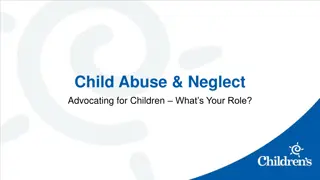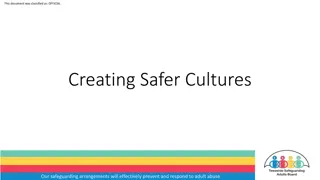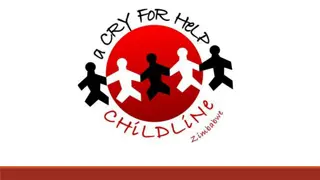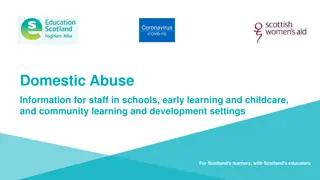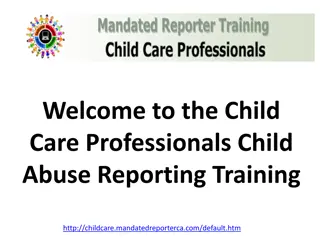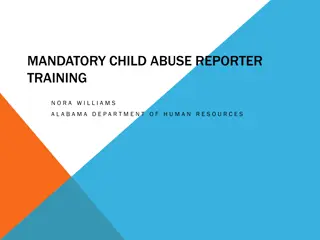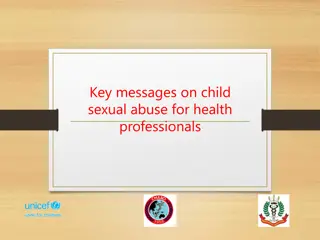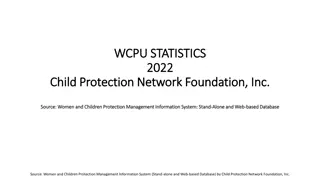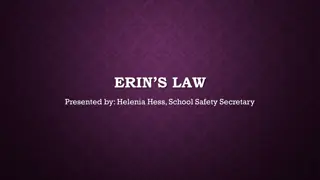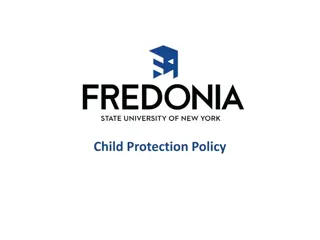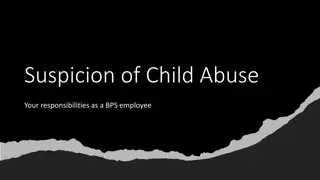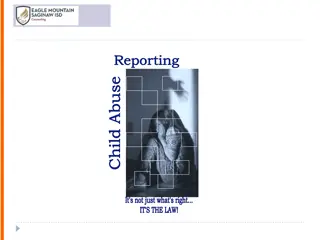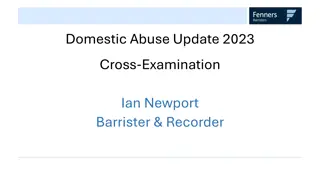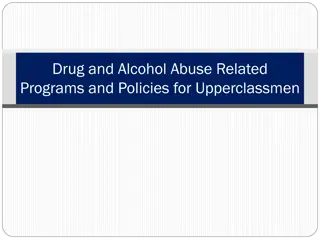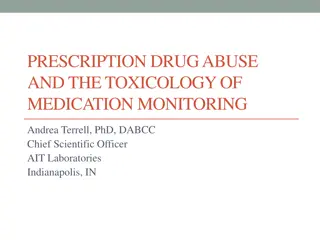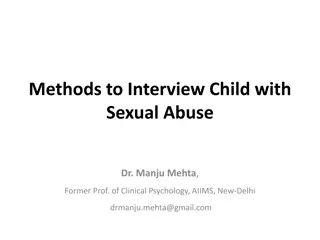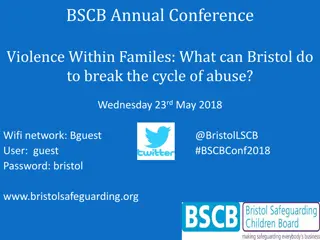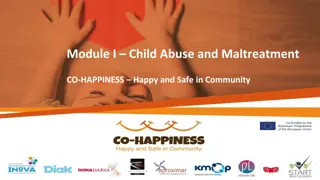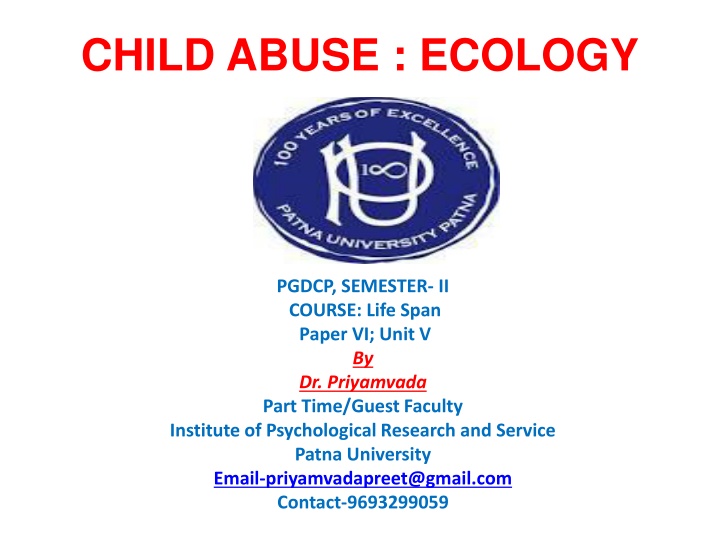
Ecology and Consequences of Child Abuse
Explore the complex interplay of environmental factors contributing to child abuse, including socioeconomic status, cultural norms on discipline, and the generational effects of violence within families. Learn about the impact of abuse on children's behavior and relationships, and the potential long-term consequences for both the abused and future generations.
Download Presentation

Please find below an Image/Link to download the presentation.
The content on the website is provided AS IS for your information and personal use only. It may not be sold, licensed, or shared on other websites without obtaining consent from the author. If you encounter any issues during the download, it is possible that the publisher has removed the file from their server.
You are allowed to download the files provided on this website for personal or commercial use, subject to the condition that they are used lawfully. All files are the property of their respective owners.
The content on the website is provided AS IS for your information and personal use only. It may not be sold, licensed, or shared on other websites without obtaining consent from the author.
E N D
Presentation Transcript
CHILD ABUSE : ECOLOGY PGDCP, SEMESTER- II COURSE: Life Span Paper VI; Unit V By Dr. Priyamvada Part Time/Guest Faculty Institute of Psychological Research and Service Patna University Email-priyamvadapreet@gmail.com Contact-9693299059
Ecology of child abuse Parents who abuse their children are frequently unemployed, poorly educated, and economically deprived. However, it is obvious that most parents of low socioeconomic status do not maltreat their children. What environmental factors might be associated with child abuse? In order to answer this question. James Garbarino and Deborah Sherman identified two neighborhoods that were similar in racial and socioeconomic composition but had markedly different rates of child maltreatment. The high-risk neighborhood had a rate of 130 cases in the low risk neighborhood. In this study it can be seen that the neighborhoods had very different characteristics that affected the well- being of families and children. In addition, parents in the high risk neighborhood utilized social relationships and resources in a different way than did those in the low risk neighborhood. This again suggests that it is the interaction between family characteristics and neighborhood characteristics , rather than either alone, that produces abuse.
Conted It has been suggested that the high incidence of child abuse also may be supported by the general acceptance of physical punishment of children in the American culture. Groups in which physical punishment of children is not accepted , such as among Chinese, battered children are rarely found. Thus, the cultural approval of violence such as spanking in childrearing may combine with the lack of social, economic and emotional resources of caretakers to produce child abuse.
Consequences of abuse It has been proposed that there may be a generational effect of violence in families. Parents who abuse their children often themselves have been abused or emotionally deprived as children. Even as infants, abused children show more noncompliant, resistant and avoidant behavior toward their mothers. Moreover, the transmission of aggressive behavior can be seen in the social interactions of abused children outside of their homes.
Conted Carol George and Mary Main (1979) observed that abused toddlers in a day care center not only were more aggressive with their peers but also were more ambivalent toward their caregivers. They threatened to attack or did attack caregivers, behaviors that never occurred in non-abused children. In addition, they showed great wariness in response to friendly behavior by the caregivers. They seemed both to have learned not to trust adults and to have acquired their parents aggressive responses. Such attitudes and behaviors would seem likely to lead to difficulties in childrearing when the abused children themselves become parents.
References: World report on violence and health; child abuse and neglect by parents and other caregivers. Hetherington and Parke(1999); Child Psychology. Benjamin. B. Lahey., and Alan. E. Kazdin ; Advances in clinical child psychology, plenum press, Vol-10, ISSN 0149-4732, Google images and Google search. Thank you

